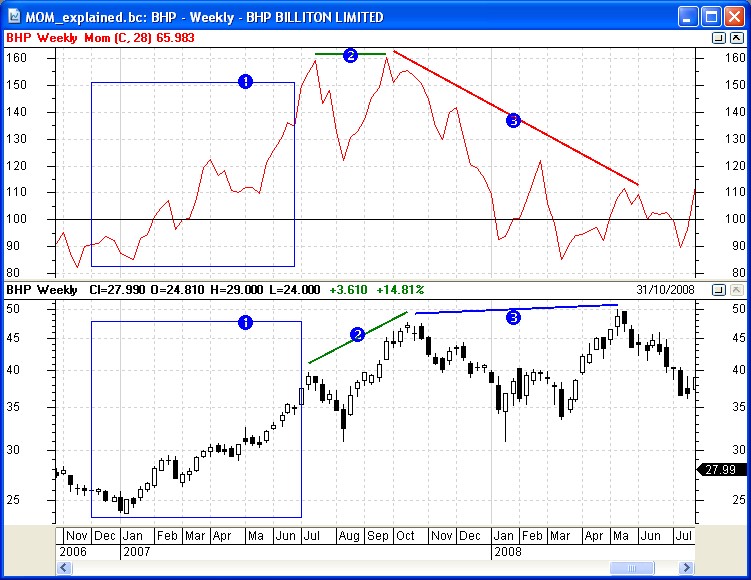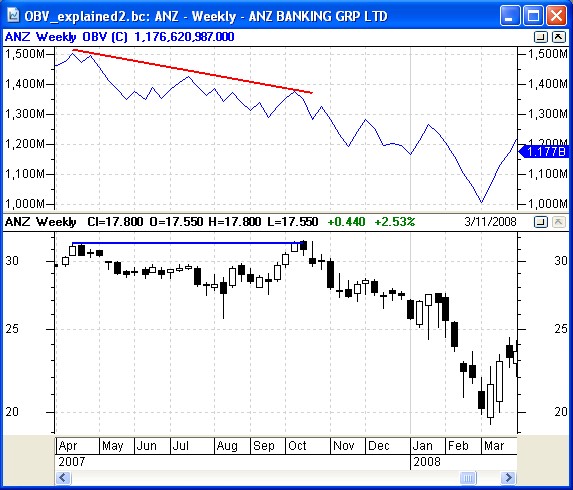Momentum indicator forex technical analysis
Every book dealing with the subject of technical analysis devotes at least a couple of chapters discussing both momentum and relative strength index RSI. For those of you not familiar with price momentum and the RSI, you need to know that J.

Welles Wilder first wrote about the subject in the classic "New Concepts In Trading Systems. Technical Analysis To understand how these two indicators can be used together, we must first, for a moment, review each of them.

Momentum is the measurement of the speed or velocity of price changes. In "Technical Analysis Of The Financial Markets," John J. To construct a day momentum line, simply subtract the closing price 10 days ago from the last closing price. This positive or negative value is then plotted around a zero line.
Introduction to Technical Indicators and Oscillators [ChartSchool]
The formula for momentum is:. Momentum measures the rate of the rise or fall in stock prices. From the standpoint of trending, momentum is a very useful indicator of strength or weakness in the issue's price. History has shown us that momentum is far more useful during rising markets than during falling markets; the fact that markets rise more often than they fall is the reason for this.
In other words, bull markets tend to last longer than bear markets. To learn more, see Banking Profits In Bull And Bear Markets. For relative strength , determining the true value of an oscillator depends on the understanding of overbought or oversold positions. There has always been a little confusion over the difference between relative strength, which measures two separate and different entities by means of a ratio line, and the RSI, which indicates to the trader whether or not an issue's price action is created by those over-buying or over-selling it.
The well-known formula for the relative strength index is as follows:. At the bottom of the chart, the RSI, on a scale of 0 to , indicates that the overbought position is at 70 and the oversold position is at A trader with today's simple-to-use software may choose to reset the indicators' parameters to 80 and This helps the trader to be sure when making the decision to buy or sell an issue, and not pull the trigger too fast.
See Speed Resistance Lines. The RSI works best when compared to short-term moving-average crossovers. Simply put, the RSI forecasts sooner than almost anything else an upcoming reversal of a trend, either up or down. A Demonstration Both indicators are very reliable on their own, but what would happen if we decided to put the two of them together?
The result offers even better timing with our entry and exit points. Let's have a look. In the first chart of Home Depot NYSE: HD , we have inserted a momentum indicator with a day period. In the second chart, we compare Home Depot during the same time frame and lay a RSI indicator across the bottom of the space.
The RSI in this example is also a day period. The first look at Home Depot shows momentum rising over the zero line in the first week of December We have shown this on the chart with blue up arrows.
The next entry level is not seen until the first week in February of , again shown with blue up arrows. For the most part, the momentum does not fall below the zero line with any conviction from that week on until the week of June The second look at Home Depot, which shows the RSI indicator, has a slightly different look from the momentum chart above. First off, there is a weak entry point in early January and then a few weeks later a somewhat stronger entry point, which for the most part continues throughout the winter and on into the spring of You can see that, after the blue up arrows entry points we have drawn in the early part of the year, there are three sets of red down arrows exit points during mid-March, again during the second week in May and again in the third week of June.
It is important to recognize that many traders view the RSI value of 50 to be a support and resistance benchmark. If an issue has a difficult time breaking through the value level, the resistance may be too high at that particular time, and the price action may fall off again until there is enough volume to break through and continue on to new levels.
An issue falling in price may find support at the 50 value and bounce off this level again to continue an upward rise in price action. For more information, see Support and Resistance Reversals.
The Bottom Line This study of Home Depot demonstrates an interesting look that traders should consider when using oscillators for entry and exit points. In the second chart of Home Depot, the weak entry point in early January is not even reflecting a buy signal in the first chart, which uses momentum.
In conclusion, disregard the entry signal. However, the second entry signal issued a few weeks later by the RSI is confirmed a week later with a strong buy signal from the momentum indicator rising above the zero line. Another important note is that even though there are three exit signals shown on the RSI chart of Home Depot, the momentum does confirm sell signals, and the stock continues to rise with short-lived pullbacks. The sell signal on the RSI chart during the third week of June is confirmed with the momentum indicator falling off sharply at the same time and dropping below the zero line.
Top 3 Technical Analysis Indicators (Ultimate Guide)Double confirmation of entry and exit points gives the trader a better understanding of whether or not they are getting in or out at the right time. And timing is everything is this game. Dictionary Term Of The Day. A measure of what it costs an investment company to operate a mutual fund. Latest Videos PeerStreet Offers New Way to Bet on Housing New to Buying Bitcoin? This Mistake Could Cost You Guides Stock Basics Economics Basics Options Basics Exam Prep Series 7 Exam CFA Level 1 Series 65 Exam.
Sophisticated content for financial advisors around investment strategies, industry trends, and advisor education. Momentum And The Relative Strength Index By Investopedia Staff Share. The formula for momentum is: The well-known formula for the relative strength index is as follows: Chart Created with Tradestation The second look at Home Depot, which shows the RSI indicator, has a slightly different look from the momentum chart above.
Chart Created with Tradestation The Bottom Line This study of Home Depot demonstrates an interesting look that traders should consider when using oscillators for entry and exit points. Learn the difference between relative strength and the relative strength index, a frequently used technical analysis oscillator.
The Relative Strength Index comes in handy when identifying areas that are potentially overbought or oversold.
Momentum - forex technical indicator
Find out how this indicator may help improve the average investor's entry and exit points. These stocks are in uptrends, but recent pullbacks have put them into oversold territory on the RSI.
Watch for a pop higher. Read about some of the many uses of the Relative Strength Index RSI , and learn about basic strategies traders implement Find out why J.
Relative Momentum Index (RMI) - forex technical indicator
Obtain early indications of overbought or oversold conditions in a market by learning the significance of the dynamic momentum Learn some of the best additional technical indicators that can be used along with the relative strength index to anticipate Understand how experts use the relative strength index RSI to improve their knowledge of a stock and its history in the Discover the advantages of using RSI as a financial tool.
One benefit is that it helps traders make quick market entries An expense ratio is determined through an annual A hybrid of debt and equity financing that is typically used to finance the expansion of existing companies. A period of time in which all factors of production and costs are variable.
In the long run, firms are able to adjust all A legal agreement created by the courts between two parties who did not have a previous obligation to each other. A macroeconomic theory to explain the cause-and-effect relationship between rising wages and rising prices, or inflation. A statistical technique used to measure and quantify the level of financial risk within a firm or investment portfolio over No thanks, I prefer not making money.
Content Library Articles Terms Videos Guides Slideshows FAQs Calculators Chart Advisor Stock Analysis Stock Simulator FXtrader Exam Prep Quizzer Net Worth Calculator. Work With Investopedia About Us Advertise With Us Write For Us Contact Us Careers. Get Free Newsletters Newsletters. All Rights Reserved Terms Of Use Privacy Policy.